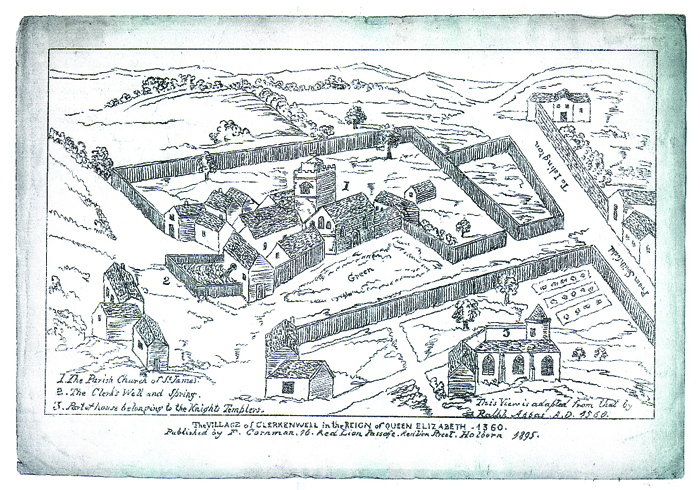The place where you are now standing is Clerkenwell, considered to have been the first suburb of London. It was in the countryside, north of the city walls; a place of fresh waters, clocks and watchmakers, sport, radical politics, crime and danger, scholars’ plays and refugees and Christian charity and revival. In the late 1800s Charles Booth mapped out the areas of crime in London and found that as bad as things are in Hoxton, they reach an even more uniformly low level on borders of Clerkenwell - which if not more criminal show at least a lower type of criminality.
Clerkenwell is just north of Smithfield, the location of meat market and barbaric executions. One historian writes that London could be said to owe its very existence to its good supply of fresh water. The well of Clerkenwell which watered Londoners from ancient times was rediscovered in 1924 and can actually be seen through the window of Well Court across the square from the church. The clerks from whom Clerkenwell takes its name were according to London’s 16th Century historian John Stowe were parish clerks in London who of old time were accustomed there to yearly assemble and to place some large of history holy scripture. Fitzstephen of the 1100s wrote that it was most famous and most frequented by scholars and youths of the city in summer evenings when they walk forth to take the air.
